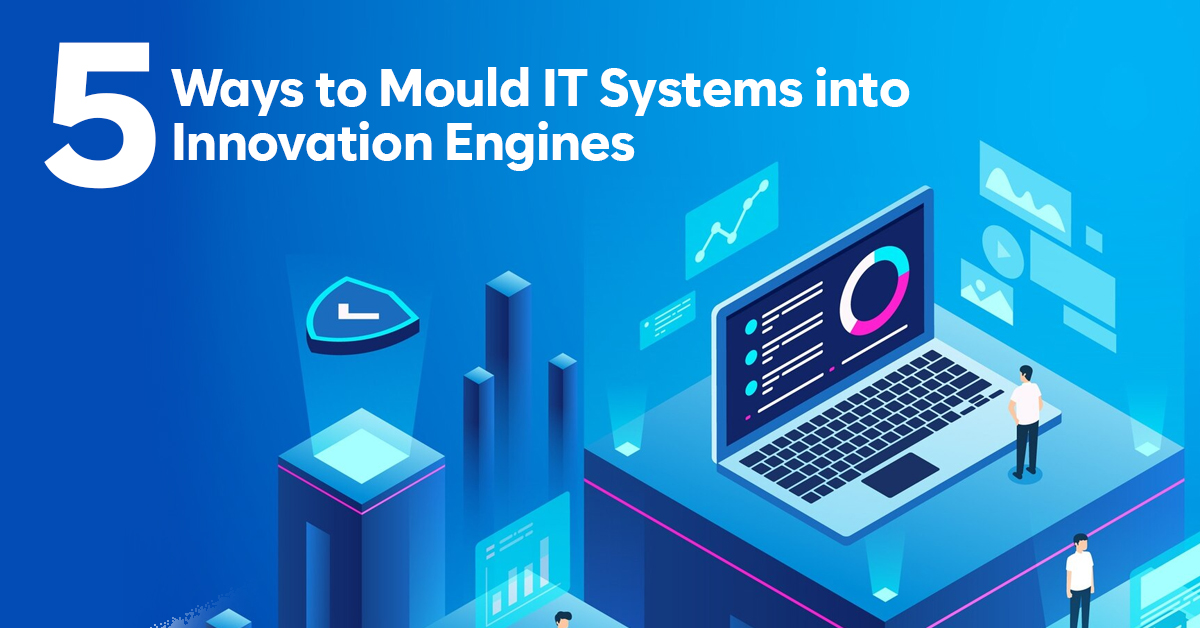In today’s fast-paced technological landscape, innovation is the key to staying ahead of the curve. Businesses that harness the power of innovation are better equipped to adapt to changing market demands, outpace competitors, and drive growth. One crucial element in this innovation journey is the effective integration of Information Technology (IT) systems. IT systems, when properly molded, can serve as powerful engines for innovation.
In this blog post, we will explore five ways to transform your IT systems into innovation powerhouses.
1. Foster a Culture of Collaboration
One of the fundamental building blocks for innovation within IT systems is the establishment of a collaborative culture. Encourage cross-functional teams to work together, breaking down silos that can stifle creativity. Collaborative environments enable the free flow of ideas, allowing diverse perspectives to converge and spark innovation. Implementing collaborative tools such as project management platforms, communication channels, and virtual workspaces can streamline teamwork, facilitating the exchange of insights and ideas.
Moreover, fostering a culture of collaboration extends beyond technology. Leadership plays a pivotal role in promoting collaboration by recognizing and rewarding collaborative efforts. When employees feel their contributions are valued and recognized, they are more likely to actively engage in the innovation process.
2. Embrace Agile Methodologies
Agile methodologies have become synonymous with adaptability and efficiency in the IT landscape. By embracing agile principles, organizations can create a flexible and iterative development environment that adapts to changing requirements and customer feedback. The agile approach emphasizes continuous improvement, frequent deliveries, and collaboration, all of which are conducive to innovation.
Breaking down large projects into smaller, manageable tasks allows for quicker iterations and adjustments. This iterative process not only accelerates the development cycle but also provides ample opportunities for innovation to emerge organically. Agile methodologies empower teams to respond to market dynamics and customer needs promptly, driving innovation at every stage of the development lifecycle.
3. Invest in Emerging Technologies
Innovation often thrives on the adoption of emerging technologies. Investing in cutting-edge tools and platforms can significantly enhance the capabilities of IT systems, opening new avenues for creativity and problem-solving. Technologies such as artificial intelligence, machine learning, blockchain, and the Internet of Things (IoT) are transforming industries and creating opportunities for innovative solutions.
Integrating these technologies into IT systems can automate routine tasks, uncover valuable insights from data, and revolutionize business processes. For instance, utilizing machine learning algorithms to analyze customer behavior can lead to personalized and innovative approaches in product development and marketing. By staying abreast of emerging technologies, organizations can position themselves at the forefront of innovation.
4. Prioritize User Experience (UX)
User experience is a critical factor in the success of any IT system, and it can also be a catalyst for innovation. Prioritizing UX design ensures that technology solutions are not only functional but also intuitive and user-friendly. A well-designed user interface can enhance user engagement and satisfaction, driving positive experiences that inspire loyalty and advocacy.
Innovation in UX goes beyond aesthetics; it involves understanding user needs and behaviors to create solutions that resonate with the end-users. Conducting user research, usability testing, and incorporating feedback loops into the development process are essential practices. By consistently refining and enhancing the user experience, IT systems can become platforms for continuous innovation that align with the evolving expectations of users.
5. Establish a Framework for Experimentation
Innovation often involves an element of risk, and creating a framework for experimentation can provide a safe space for trying out new ideas. Encourage a mindset that embraces experimentation and learning from failures. Establishing a dedicated environment for testing and prototyping allows teams to explore innovative concepts without jeopardizing core business operations.
Furthermore, fostering a culture that views failures as learning opportunities promotes resilience and adaptability. Implementing rapid prototyping, proof-of-concept projects, and innovation labs can provide a structured approach to experimentation. By creating a framework that encourages calculated risk-taking, organizations can unlock the full potential of their IT systems as innovation engines.
Conclusion
Molding IT systems into innovation engines requires a holistic approach that encompasses organizational culture, methodologies, technologies, user experience, and a willingness to experiment. By implementing these five strategies, businesses can transform their IT ecosystems into dynamic hubs of innovation, driving sustained growth and competitive advantage in an ever-evolving digital landscape.




